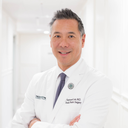I currently have my ear stretchered to 3/4, and during the process I tore a few times my ears. While I did manage to tear my ears I never developed any hypertrophic/Kelly's scars. I know I am suseptable to these types of scars because I do have a few keloids. I am looking into ear lobe reconstruction and want to know if this type of scarring can be avoided by using something like silicon gel strips during or after the healing process?
Answers (8)
From board-certified doctors and trusted medical professionals
Dr. Adam Goodwin, MBBS, FRCS(Plast)
Specialist Registered Plastic Surgeon
Answer
Dr. Matthew R. Kelleher, MD
Dermatologic Surgeon, Board Certified in Dermatology
Answer
Dr. Jeremy S. Hurren, BSc, MBBS, FRCS (Plast)
Specialist Registered Plastic Surgeon
Answer
Dr. Sapna A. Patel, MD
Facial Plastic Surgeon, Board Certified in Otolaryngology – Head and Neck Surgery
Answer
More Earlobe Repair Questions
See all Earlobe Repair Q&AWE SEND PRETTY
EMAILS
What’s trending? Who’s turning heads? Which TikTok myths need busting? We’ve got you. No fluff, no gatekeeping—just real talk. Get our free, unfiltered newsletter.



